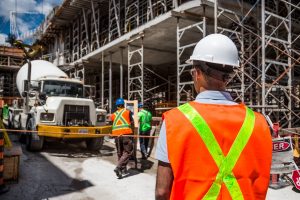 With coronavirus spreading across the world, how will the pandemic potentially impact the scaffolding industry?
With coronavirus spreading across the world, how will the pandemic potentially impact the scaffolding industry?
At the time of writing this article, there have been over 19 million confirmed COVID-19 cases worldwide. The latest data shows that over 308,000 people have contracted the highly infectious virus in the UK.
Naturally, the government has been anxious to stem the spread of this infectious respiratory disease and implemented drastic measures over the past few months. The measures include, but are not limited to, the closure of schools, stay-in-place orders, banning of large public gatherings, cancelling of events and encouraging citizens to work from home. As you can appreciate, some of these orders have had a huge negative impact on the scaffolding, and construction, industry, at large. And it’s not just to do with the physical erection of scaffolding but its supply as well, suppliers as far-flung as APL Kwikform have been severely affected since the early days of the pandemic.
Reports have shown that these measures have made it impossible for more than 80% of workers to work during the pandemic.
And the construction industry experienced these effects almost immediately as the pandemic permeated into our country. In the early days of the pandemic, EDF (the builder of the UK’s two new nuclear reactors) announced that two of their workers had contracted the virus.
Supply of Materials
Supply chains have experienced huge impacts owing to the fact that the vast majority of scaffolding materials, including fittings and tubes, are imported from countries affected by COVID-19, including China.
In a statement released to Scaffmag, Layher said that owing to the nature of the industry and as part of their pre-plans, the company used its full production capacity over the winter up to around February. Moreover, they continued to expand their stocks at its factory in Germany and across all its 140+ service and outlet centres around the world.
Layher further explained they ramped up production and stocking in preparation for the busy spring and summer months. Moreover, ongoing Brexit negotiations had forced Lyaher UK to up its stock levels significantly.
On the raw materials front, the company has built up a large stockpile, and, therefore, they are not dependent on supplier products, for instance, from China. Layher is well-placed to weather any disruption in the coming months.
Scaffolding Training
As a consequence of the lockdown, scaffolding training courses around the UK (and the entire world) were halted entirely. Many scaffolders were, therefore, unable to take part in crucial scaffolding training. There has been little to no delivery of the Scaffolder CPD courses. This has affected their ability to maintain high levels of scaffolding safety. As such, many scaffolders are waiting in limbo as they are due to refresh their CISRS cards.
Training is a crucial part of the scaffolding industry for both newcomers as well as established and experienced professionals. The training continuously adapts to changes in best practice methods and legislation. To keep the training going on, experts in the field have turned to new ways to ensure scaffolders continue to learn.
Procedures and Methods at Construction Sites
From the outset of the pandemic, the government has stressed the need for construction projects to continue, albeit while following the recommended restrictions. As such, industry players are faced with the challenge of ensuring their workers are safe from the risks present at a construction site while ensuring workers do not inadvertently spread the virus amongst themselves.
The guidelines provided have been generic in nature with good reason. SIMIAN has been working to interpret how the guidelines can be applied in the scaffolding industry. As a leader in the field, we have shared with clients our “Guidance for Scaffolding”. Moreover, we will share our revised guidance that will incorporate the latest developments and revisions from the wider industry guidance. It will contain aspects of industry guidance, including Site Operating Procedures, published by the Construction Leadership Council.
Some of the ways of protecting against the spread of COVID-19 include:
- Hand-sanitiser on site
- One-way systems
- Lone travelling
- Staggered break and shift times
- Consistency of work gangs
- Ample space in the washroom and break out facilities
- Reducing the number of workers making use of lifts and hoists
- Regularly cleaning common touch-points (such as handles, buttons, etc.) and equipment
